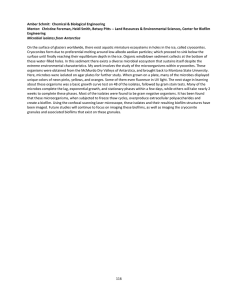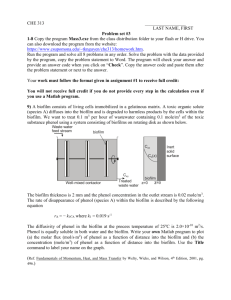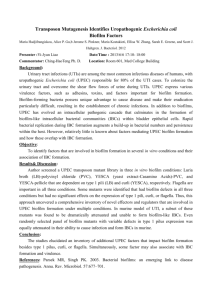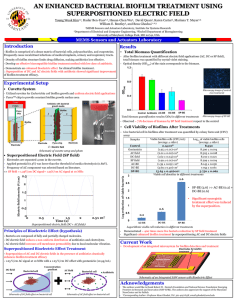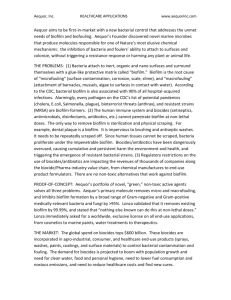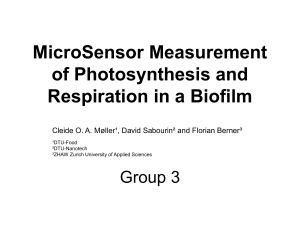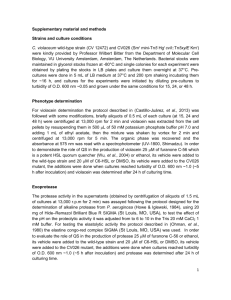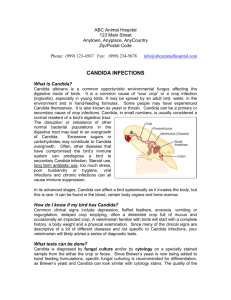Biofilm Formation in the Setting of Candiduria
advertisement
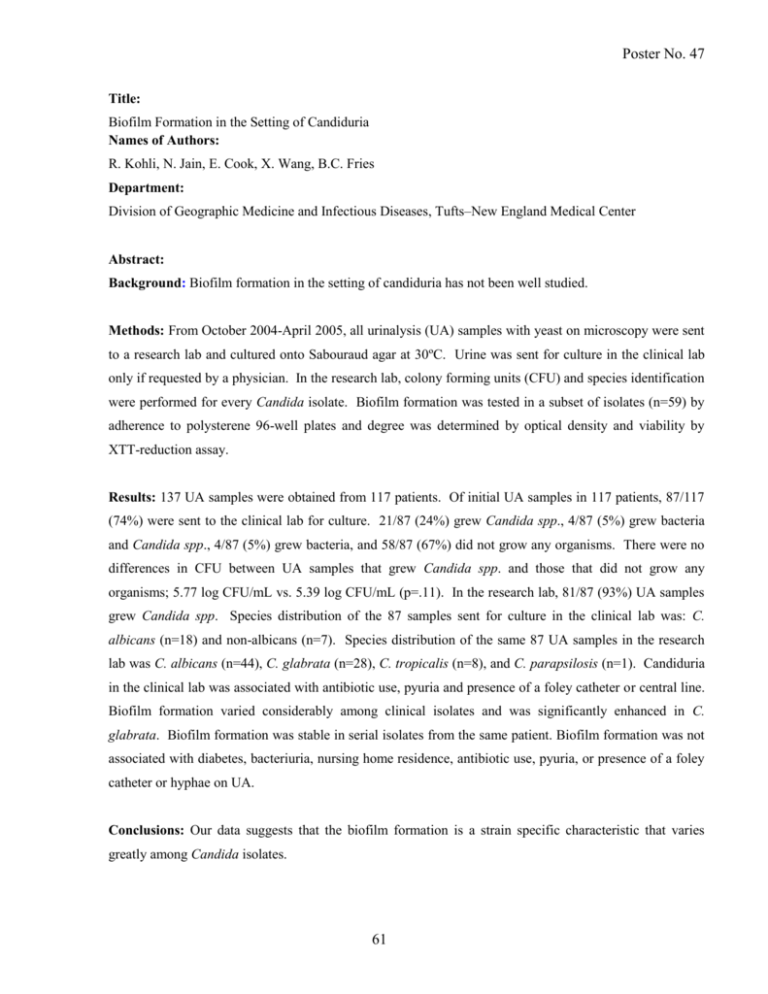
Poster No. 47 Title: Biofilm Formation in the Setting of Candiduria Names of Authors: R. Kohli, N. Jain, E. Cook, X. Wang, B.C. Fries Department: Division of Geographic Medicine and Infectious Diseases, Tufts–New England Medical Center Abstract: Background: Biofilm formation in the setting of candiduria has not been well studied. Methods: From October 2004-April 2005, all urinalysis (UA) samples with yeast on microscopy were sent to a research lab and cultured onto Sabouraud agar at 30ºC. Urine was sent for culture in the clinical lab only if requested by a physician. In the research lab, colony forming units (CFU) and species identification were performed for every Candida isolate. Biofilm formation was tested in a subset of isolates (n=59) by adherence to polysterene 96-well plates and degree was determined by optical density and viability by XTT-reduction assay. Results: 137 UA samples were obtained from 117 patients. Of initial UA samples in 117 patients, 87/117 (74%) were sent to the clinical lab for culture. 21/87 (24%) grew Candida spp., 4/87 (5%) grew bacteria and Candida spp., 4/87 (5%) grew bacteria, and 58/87 (67%) did not grow any organisms. There were no differences in CFU between UA samples that grew Candida spp. and those that did not grow any organisms; 5.77 log CFU/mL vs. 5.39 log CFU/mL (p=.11). In the research lab, 81/87 (93%) UA samples grew Candida spp. Species distribution of the 87 samples sent for culture in the clinical lab was: C. albicans (n=18) and non-albicans (n=7). Species distribution of the same 87 UA samples in the research lab was C. albicans (n=44), C. glabrata (n=28), C. tropicalis (n=8), and C. parapsilosis (n=1). Candiduria in the clinical lab was associated with antibiotic use, pyuria and presence of a foley catheter or central line. Biofilm formation varied considerably among clinical isolates and was significantly enhanced in C. glabrata. Biofilm formation was stable in serial isolates from the same patient. Biofilm formation was not associated with diabetes, bacteriuria, nursing home residence, antibiotic use, pyuria, or presence of a foley catheter or hyphae on UA. Conclusions: Our data suggests that the biofilm formation is a strain specific characteristic that varies greatly among Candida isolates. 61
